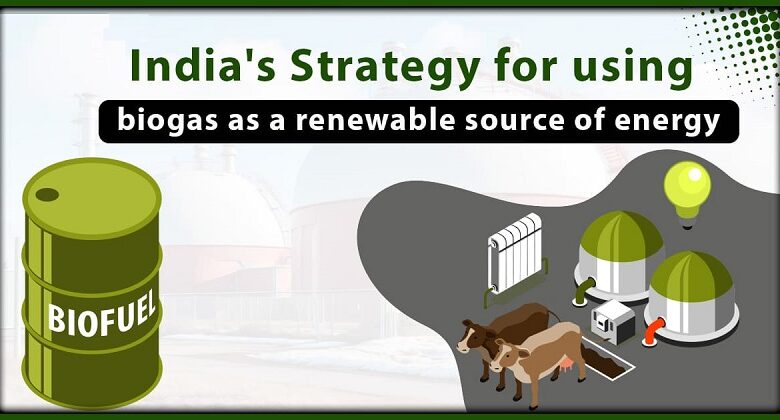Harnessing Nature’s Resources: The Rise of Biogas in India

News Mania Desk / Agnibeena Ghosh/15th May 2024
In the verdant landscapes of Maharashtra, Rukmini Baburao Kumbhar, a devoted member of a spiritual community, engages in a daily ritual. Armed with bare hands, she collects approximately 50kg of fresh cow dung. While this practice may seem mundane, its purpose transcends mere tidiness. In the heart of rural India, cow dung serves as a vital resource for producing biomethane, fueling the kitchens of her ashram.
For Ms. Kumbhar and her community, the utilization of cow dung for biogas production offers a sustainable alternative to expensive conventional fuels. With ample space and a herd of cows at their disposal, they embarked on a journey towards energy self-sufficiency. The process begins with the collection of cow dung, which is then mixed with water and fed into a bioreactor. Through anaerobic digestion, naturally occurring bacteria decompose the organic matter, yielding methane—a clean and renewable energy source.
Ms. Kumbhar’s initiative, while rooted in practicality, also reflects a broader national agenda in India. With an annual production of approximately three million tonnes of cow dung, the government is keen on harnessing this abundant resource for energy generation. Biogas plants, employing anaerobic digestion technology, have emerged as a promising solution for converting agricultural waste into methane—a process vital for reducing the country’s reliance on imported natural gas.
The government’s commitment to bolstering the biogas industry is underscored by ambitious targets. By 2025, gas suppliers are mandated to blend natural gas with 1% biomethane, with the percentage set to increase to 5% by 2028. This strategic initiative not only aims to curtail gas imports but also addresses pressing environmental concerns. Biogas production mitigates air pollution by diverting agricultural residues, such as stubble, away from conventional burning methods towards bioreactors.
Despite the potential benefits of biogas, challenges persist, particularly in the realm of infrastructure and public perception. In rural areas, where agricultural residues abound, the lack of awareness and financial constraints hinder widespread adoption. Conversely, in urban centers, space constraints and the odor associated with biogas production pose significant obstacles.
In Ludhiana, Punjab, a bustling city renowned for dairy production, cow dung poses a dual challenge. The burgeoning population of cows, coupled with inadequate waste management practices, has led to environmental degradation. However, innovative solutions, such as large-scale biogas reactors at the Haibowal Dairy Complex, offer a glimmer of hope. These facilities, capable of processing vast quantities of dung, not only address pollution concerns but also provide economic opportunities for local communities.
Rajiv Kumar, tasked with sourcing cow dung for biogas production, recounts the initial skepticism among farmers. However, over time, the economic benefits have incentivized cooperation, transforming waste into a valuable commodity. Similarly, Baljit Singh, hailing from Punjab’s agricultural heartland, exemplifies the entrepreneurial spirit driving biogas adoption. Through persistence and persuasion, Mr. Singh has mobilized a workforce to collect agricultural residues, thereby fostering economic resilience in rural communities.
Despite the strides made in biogas adoption, skeptics question its viability as a mainstream fuel. In urban settings, logistical challenges and odor concerns deter widespread acceptance, while in rural areas, cost considerations impede accessibility. Kiran Kumar Kudaravalli, from SKG Sangha, a renewable energy-focused nonprofit, underscores the dichotomy between urban and rural contexts. While the potential for biogas is evident, addressing infrastructure gaps and public perception remains imperative for its widespread adoption.
As India charts a course towards energy security and environmental sustainability, the role of biogas assumes greater significance. Beyond its utility as a fuel, biogas embodies a holistic approach to resource management—one that harmonizes economic prosperity with ecological stewardship. In harnessing the power of nature’s bounty, India stands poised to usher in a new era of energy resilience and environmental stewardship.
Image credit : Enter Climate






